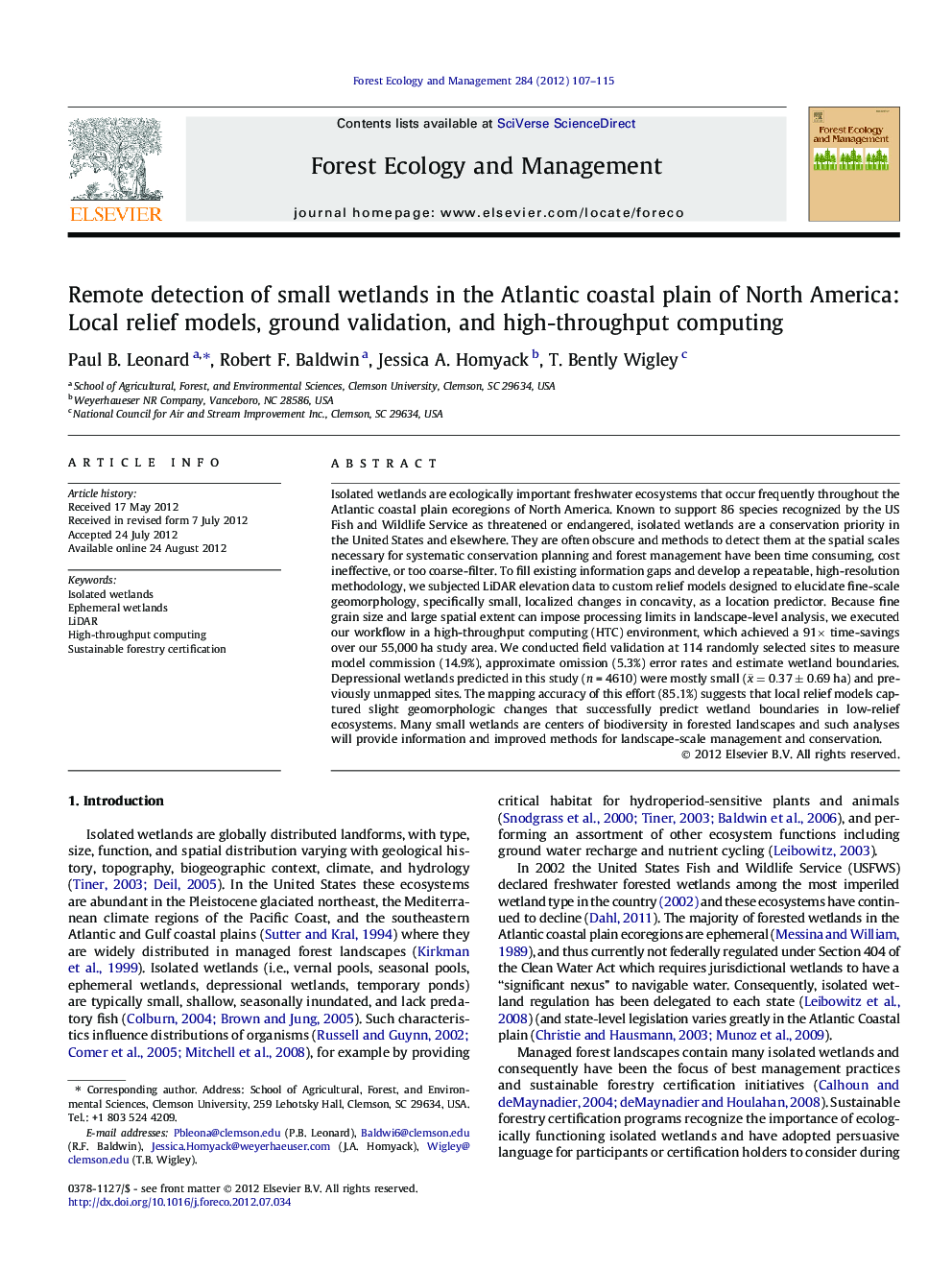| Article ID | Journal | Published Year | Pages | File Type |
|---|---|---|---|---|
| 87270 | Forest Ecology and Management | 2012 | 9 Pages |
Isolated wetlands are ecologically important freshwater ecosystems that occur frequently throughout the Atlantic coastal plain ecoregions of North America. Known to support 86 species recognized by the US Fish and Wildlife Service as threatened or endangered, isolated wetlands are a conservation priority in the United States and elsewhere. They are often obscure and methods to detect them at the spatial scales necessary for systematic conservation planning and forest management have been time consuming, cost ineffective, or too coarse-filter. To fill existing information gaps and develop a repeatable, high-resolution methodology, we subjected LiDAR elevation data to custom relief models designed to elucidate fine-scale geomorphology, specifically small, localized changes in concavity, as a location predictor. Because fine grain size and large spatial extent can impose processing limits in landscape-level analysis, we executed our workflow in a high-throughput computing (HTC) environment, which achieved a 91× time-savings over our 55,000 ha study area. We conducted field validation at 114 randomly selected sites to measure model commission (14.9%), approximate omission (5.3%) error rates and estimate wetland boundaries. Depressional wetlands predicted in this study (n = 4610) were mostly small (x¯=0.37±0.69ha) and previously unmapped sites. The mapping accuracy of this effort (85.1%) suggests that local relief models captured slight geomorphologic changes that successfully predict wetland boundaries in low-relief ecosystems. Many small wetlands are centers of biodiversity in forested landscapes and such analyses will provide information and improved methods for landscape-scale management and conservation.
► Ephemeral wetlands are poorly mapped yet ecologically important ecosystems. ► Sustainable forestry initiatives are singling out small wetlands for management. ► Local relief models created from LiDAR DEMs characterize wetland interfaces. ► High-resolution models are rapidly analyzed using high-throughput computing. ► Methods provide rapid fine-scale mapping of wetlands in low-relief ecosystems.
